Sourdough Starter: How to Create and Maintain a Healthy Culture
Are you interested in making your own sourdough bread? One of the key ingredients you’ll need is a sourdough starter. This living culture of wild yeast and bacteria is what gives sourdough bread its signature tangy flavor and chewy texture. While it may seem daunting to make your own starter from scratch, it’s actually a fairly simple process that just requires a bit of patience and attention.
There are plenty of recipes and guides available online that can help you create your own sourdough starter. One popular method involves mixing flour and water and allowing it to sit out at room temperature for several days, feeding it with more flour and water each day until it becomes active and bubbly. Once your starter is established, you can use it to make all sorts of delicious sourdough breads, pancakes, waffles, and more. With a little practice and experimentation, you’ll soon be able to master the art of sourdough baking and impress your friends and family with your homemade creations.
Disclosure: As an Amazon affiliate, I earn from qualifying purchases at no extra cost to you. My blog contains other affiliate links as well for your convenience. To learn more, you may read my Disclosure Policy. Thank you for supporting my blog!
What is a Sourdough Starter?
If you’re interested in making sourdough bread, you’ll need to start with a sourdough starter. A sourdough starter is a mixture of flour and water that has been fermented by naturally occurring yeast and bacteria. It’s the foundation of sourdough bread, providing both flavor and leavening.
Unlike commercial yeast, which is a single strain of yeast that has been cultivated for consistency, sourdough starter contains a variety of wild yeasts and bacteria that give the bread its unique flavor and texture. These microorganisms are naturally present in the flour and the air, and they create a culture that can be used to ferment dough.
To make a sourdough starter, you’ll need to mix flour and water together and then let it sit at room temperature for several days. During this time, the natural yeasts and bacteria in the flour and the air will begin to multiply and ferment the mixture. As the mixture ferments, it will become bubbly and fragrant, indicating that the culture is active and ready to use.
One of the benefits of using a sourdough starter is that it’s a natural and organic way to leaven bread. Commercial yeast is often genetically modified and can contain additives, while sourdough starter is made from simple ingredients that are easy to find and use.

In summary, a sourdough starter is a mixture of flour and water that has been fermented by naturally occurring yeast and bacteria. It’s the foundation of sourdough bread, providing both flavor and leavening. Making a sourdough starter is a simple and rewarding process that can lead to delicious bread.
How to Make a Sourdough Starter
Making a sourdough starter is a simple process that requires only two ingredients: flour and water. However, it is important to use the right type of flour and water to ensure that the starter will be healthy and active. Here’s how to make a sourdough starter:
- Choose your flour: It is recommended to use organic flour, as it contains more natural yeast and bacteria than non-organic flour. You can use any type of flour, but whole wheat or rye flour is the best choice for creating a strong starter.
- Mix flour and water: In a large, non-reactive container, mix equal parts flour and water by weight. For example, if you use 100 grams of flour, add 100 grams of water. Mix well until there are no dry bits of flour left.
- Feed the starter: After 24 hours, discard half of the starter and add fresh flour and water in equal parts again. This process is called “feeding” the starter, and it is essential for creating a healthy and active culture.
- Repeat: Continue to feed the starter every 24 hours at the same ratio of flour and water until it becomes bubbly and active. This can take anywhere from 5 to 10 days, depending on the temperature and humidity of your kitchen.
- Use or store: Once your starter is active, you can use it to make sourdough bread or other baked goods. If you don’t plan to use it right away, store it in the fridge and feed it once a week to keep it alive.
Remember, sourdough starter is a living culture that requires regular feeding and care to stay healthy. By following these simple steps, you can create a strong and active starter that will provide you with delicious sourdough bread for years to come.
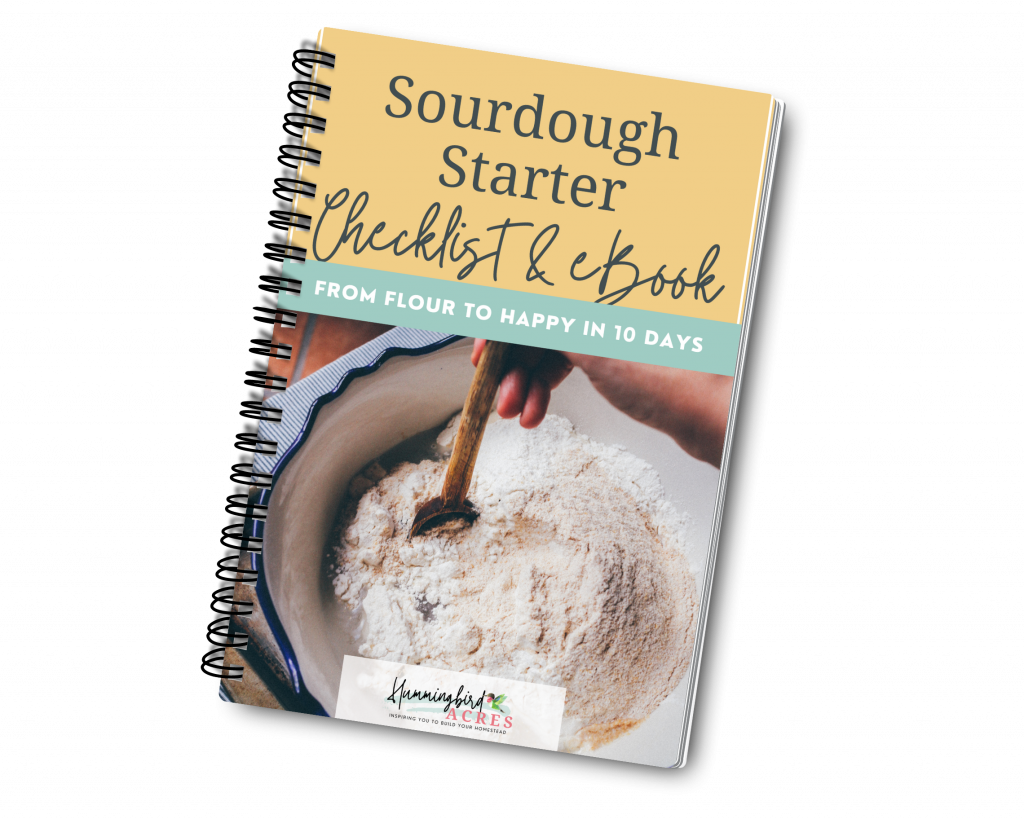
Grab my free Ebook
Sourdough Starter Checklist & eBook
From Flour to Happy Starter in 10 DAYS!!
Feeding and Maintaining Your Sourdough Starter
Maintaining a healthy sourdough starter is crucial for successful sourdough baking. Here are some tips for feeding and maintaining your sourdough starter:
Regular Feeding
To keep your sourdough starter healthy and active, you need to feed it regularly. The frequency of feeding depends on the environment and the consistency of your starter. As a general rule, you should feed your starter once a day if it’s kept at room temperature. If you keep it in the fridge, you can feed it once a week.
Feeding Ratio
The feeding ratio is the amount of flour and water you add to your starter. The most common ratio is 1:1:1 (starter: flour: water). For example, if you have 50g of starter, you would add 50g of flour and 50g of water. However, you can adjust the ratio to suit your preference and the consistency of your starter.
Discard
When you feed your starter, you should discard a portion of it to maintain the right volume and consistency. The amount you discard depends on how much starter you have and how often you feed it. As a general rule, you should discard at least half of your starter before feeding it.
Hydration and Consistency
The hydration and consistency of your starter affect its activity and performance. A high hydration starter (100% hydration or more) is more liquid and easier to mix, but it may require more frequent feeding. A low hydration starter (less than 100% hydration) is thicker and may need less frequent feeding. You can adjust the hydration and consistency of your starter by adding more or less water and flour.

Environment and Container
The environment and container you use to store your starter can also affect its activity and performance. A warm and humid environment can speed up fermentation, while a cold and dry environment can slow it down. You should also use a container that allows your starter to breathe and expand, such as a glass jar or a plastic container with a loose-fitting lid.
Maintenance
Maintaining your sourdough starter is a continuous process that requires patience and attention. If you neglect your starter, it may become weak or contaminated. To keep your starter healthy and active, you should feed it regularly, discard a portion of it before feeding, adjust the hydration and consistency as needed, and store it in a suitable environment and container. With proper maintenance, your sourdough starter can last for years and produce delicious sourdough bread.
Using Your Sourdough Starter in Bread Baking
Now that you have successfully created your sourdough starter, it’s time to start using it in your bread baking. Here are some tips to help you get started:
Feeding Your Starter
Before using your starter in a bread recipe, you need to make sure it’s active and healthy. This means feeding it regularly with a mixture of flour and water. The feeding ratio can vary depending on your preference, but a common ratio is 1:1:1 (equal parts starter, flour, and water). Feed your starter at least once a week or more frequently if you use it often.
Choosing the Right Flour
The type of flour you use in your bread recipe can affect the taste and texture of the final product. All-purpose flour, bread flour, rye flour, whole-grain flour, white flour, and whole wheat flour are all great options for sourdough bread. Experiment with different types of flour to find the one that works best for you.

Fermentation
Sourdough bread is unique because it’s made using wild yeasts and bacteria that naturally occur in the flour and air. Fermentation is the process that allows these microorganisms to break down the sugars in the dough, producing carbon dioxide and other gases that cause the bread to rise. The longer you ferment your dough, the more flavorful it will be.
Using Commercial Yeast
While sourdough bread is traditionally made without commercial yeast, you can use a small amount of it in your recipe to help speed up the fermentation process. Use no more than 1/4 teaspoon of yeast per loaf of bread.
Other Uses for Sourdough Starter
Sourdough starter can be used in more than just bread baking. You can use it to make pancakes, waffles, pizza crust, and more. Just be sure to adjust the recipe to account for the sourdough starter.
Room Temperature and Water
Room temperature is important when using sourdough starter in bread baking. The ideal temperature for fermentation is between 70-75°F. Use bottled water or filtered water when feeding your starter or making bread to avoid any chlorine or other chemicals that can harm the natural yeast and bacteria in the starter.
With these tips, you’re ready to start using your sourdough starter in your bread baking. Happy baking!
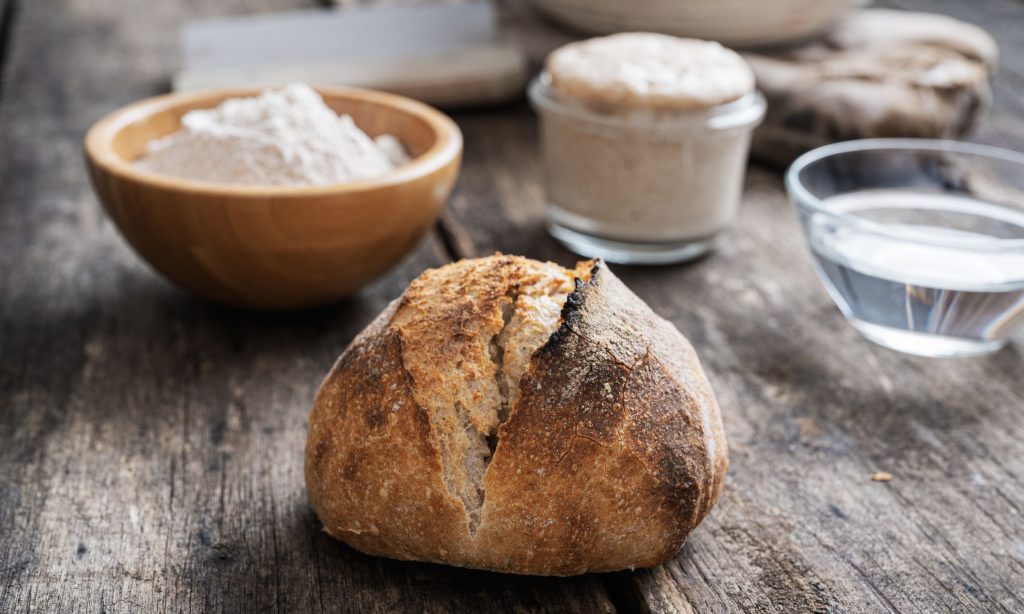
Troubleshooting Your Sourdough Starter
If you’re having trouble with your sourdough starter, don’t worry! It’s a common problem that can be easily fixed. Here are some tips to help you troubleshoot your sourdough starter:
Feedings
Are you feeding your sourdough starter regularly? If not, this could be the source of the problem. You should be feeding your starter at least once a day, or every 12 hours if you want to speed up the process.
Bubbles
Are you seeing bubbles in your sourdough starter? If not, it might not be active enough. You should see bubbles forming on the surface of your starter after feeding it. If you’re not seeing any bubbles, try feeding it more frequently or using warmer water.
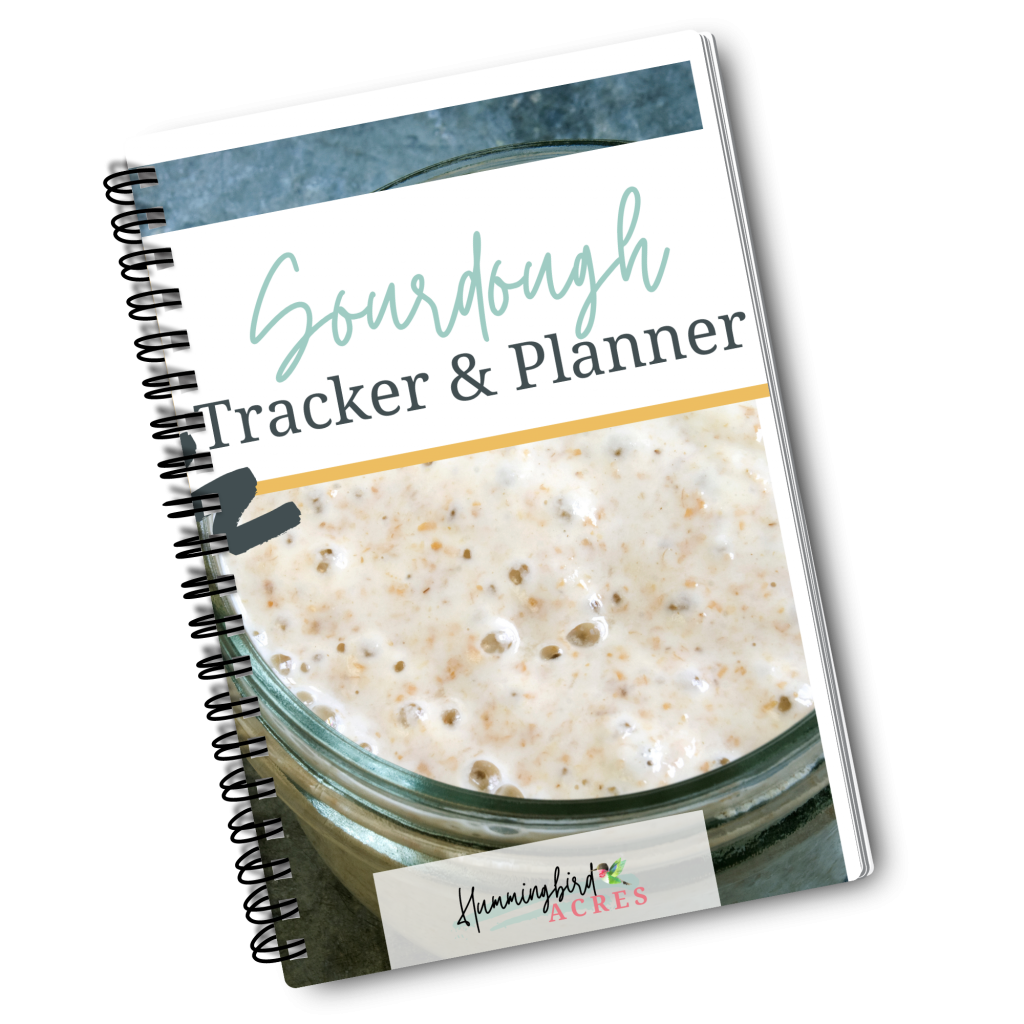
Get our
Sourdough Tracker & Planner
When to fed? When to discard? Stay on track to keep your starter happy.
Smell
Does your sourdough starter smell bad? If so, it might be contaminated with mold or other harmful organisms. A healthy starter should smell yeasty, acidic, and slightly sweet. If it smells strong or unpleasant, you might need to start over with a new batch.
Consistency
Is your sourdough starter too thick or too thin? The consistency of your starter should be like a thick pancake batter. If it’s too thick, add a little more water. If it’s too thin, add a little more flour.
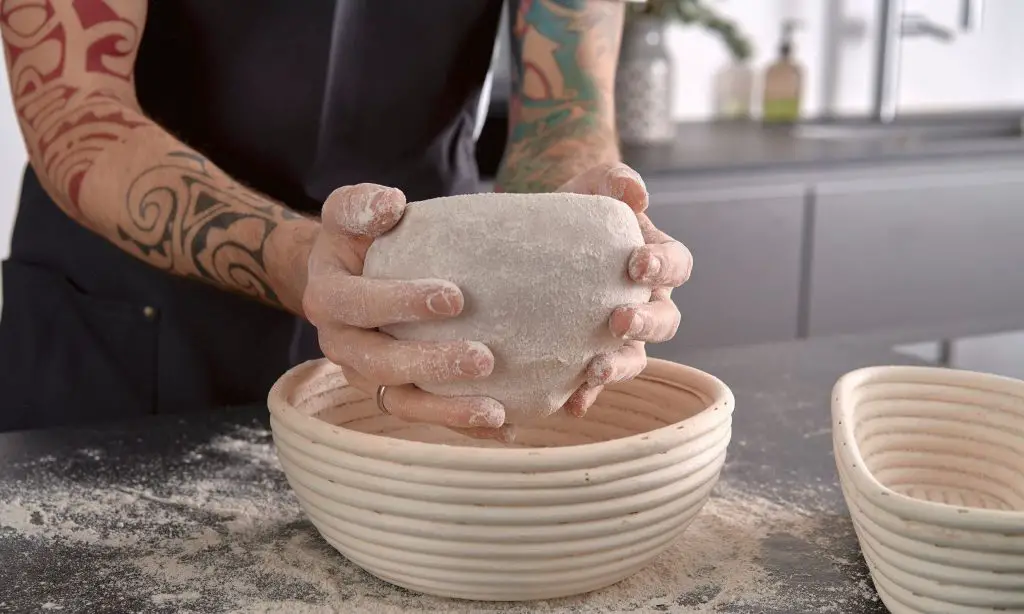
Warm Spot
Is your sourdough starter in a warm spot? It needs to be kept in a warm place to activate the yeast and bacteria. The ideal temperature range is between 70-85°F. If your kitchen is too cold, you can create a warm spot by placing your starter in the oven with the light on.
Ambient Temperature
Is the ambient temperature too cold or too hot? The temperature of your kitchen can affect your sourdough starter. If it’s too cold, it might not be active enough. If it’s too hot, it might be overactive and produce a sourdough that’s too sour.
Tap Water
Are you using tap water to feed your sourdough starter? If so, it might contain chlorine or other chemicals that can kill the yeast and bacteria. Try using filtered or bottled water instead.
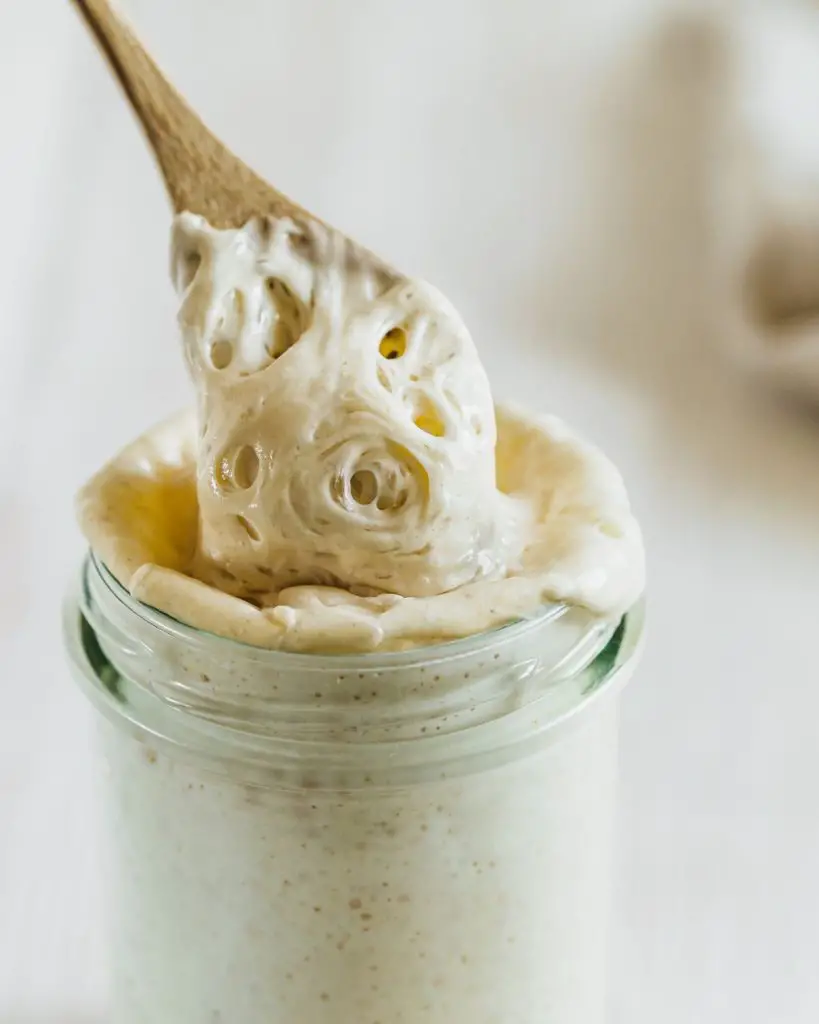
Storing Your Sourdough Starter
Once you have created your sourdough starter, it’s essential to store it properly to keep it healthy and active. Here are some tips on how to store your sourdough starter:
Fridge or Counter?
Whether you store your sourdough starter in the fridge or on the counter depends on how often you bake. If you bake sourdough bread more than a couple of times a week, keep your starter on the counter at ambient temperature. If you don’t bake every week, store it in the fridge to slow down fermentation.
Cleaning the Container
Before storing your sourdough starter, make sure to clean the container thoroughly. Use warm water and soap to remove any residue or bacteria that could harm your starter. Rinse the container with tap water and dry it completely before adding your starter.
Smaller Starter
If you’re not baking frequently, consider keeping a smaller starter. A smaller starter requires less maintenance and takes up less space in your fridge.

Discard Recipe
If you have excess sourdough starter, you can use it in other recipes. There are many discard recipes available online, such as sourdough pancakes or sourdough cake.
Storage Container
Choose a container that is large enough to hold your sourdough starter and has a tight-fitting lid. A glass jar or a plastic container with a lid works well. Make sure the lid is airtight to prevent oxygen from entering the container.
Ambient Temperature
If you keep your sourdough starter on the counter, make sure the room temperature is between 70-80°F. If the temperature is too low, the fermentation process will slow down, and your starter will become inactive.
Tap Water
Use tap water to feed your sourdough starter. Chlorinated water can harm your starter, so if your tap water is chlorinated, let it sit out overnight before using it.
By following these tips, you can store your sourdough starter properly and keep it healthy and active for many years to come.
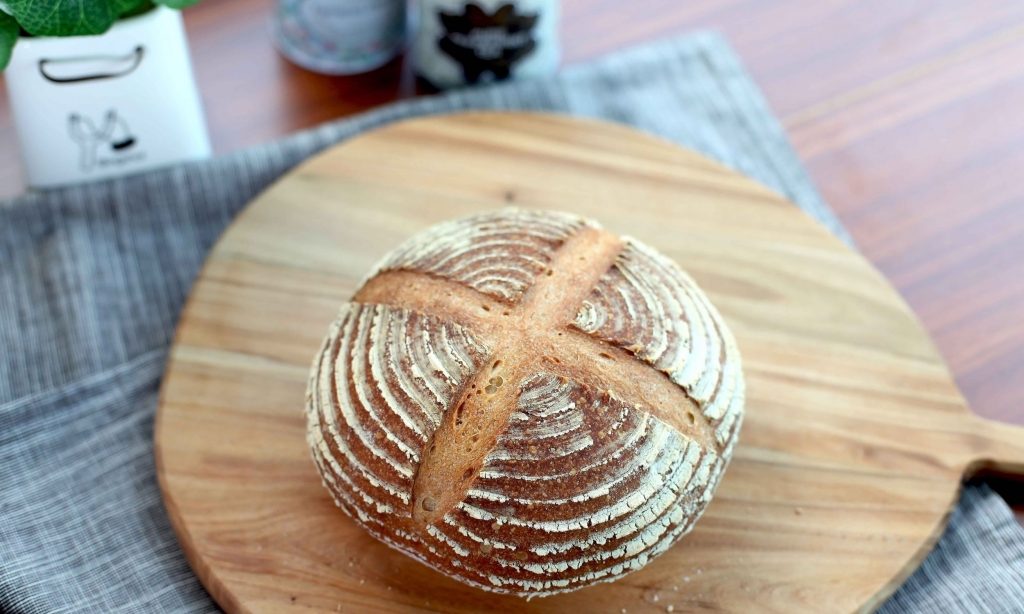
Congratulations, you have successfully made your own sourdough starter! With a little bit of patience and practice, you will be able to bake delicious sourdough breads and other baked goods.
Remember to take care of your starter by feeding it regularly and storing it properly. You can use your starter to make a variety of sourdough breads, from classic loaves to more unique flavors like cinnamon raisin or garlic herb.
Experiment with different flours and hydration levels to find what works best for you and your baking style. Don’t be afraid to make mistakes and learn from them.
Sourdough baking can be a rewarding and satisfying hobby, and with your new starter, you have taken the first step towards becoming a skilled sourdough baker. Enjoy the process and savor the delicious results of your hard work.
You may also enjoy these related articles:
- Sourdough Glossary
- Should Sourdough Starter be Used at its Peak?
- How to Tell if Your Sourdough Starter is at its Peak
Did you enjoy this article? Want to hear more? Stay in touch! Sign up below to receive weekly tips and inspiration for your homestead.

